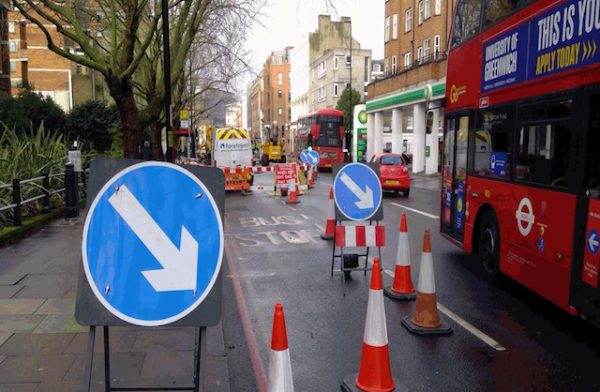A series of changes to London’s pioneering Lane Rental scheme are set to come into force from May after Transport for London’s (TfL’s) plans to improve the scheme were approved by the Department for Transport (DfT). These include an expansion of the area it covers and incentives for the highest safety standards.
 The changes will play an important role in enabling more people to walk and cycle, by making roadworks more efficient and reducing the disruption faced when pavements and cycle routes are blocked by roads being dug up. Ensuring that roadworks are carried out as efficiently as possible will also help to protect bus service reliability across the capital, which is currently at record levels. The changes will support TfL as it works to deliver the Mayor’s Vision Zero goal of eliminating death and serious injury on the transport network, by incentivising companies to commit to and demonstrate the very highest safety standards when carrying out roadworks.
The changes will play an important role in enabling more people to walk and cycle, by making roadworks more efficient and reducing the disruption faced when pavements and cycle routes are blocked by roads being dug up. Ensuring that roadworks are carried out as efficiently as possible will also help to protect bus service reliability across the capital, which is currently at record levels. The changes will support TfL as it works to deliver the Mayor’s Vision Zero goal of eliminating death and serious injury on the transport network, by incentivising companies to commit to and demonstrate the very highest safety standards when carrying out roadworks.
The Lane Rental scheme allows TfL to charge utility companies and infrastructure providers a daily fee for digging up the busiest sections of London’s roads at the busiest times. This encourages companies to plan their works outside of the most sensitive times. All money raised from the scheme is then reinvested in initiatives and innovations designed to reduce the congestion and disruption caused by roadworks across the capital. Ensuring that vital utilities roadworks can continue to take place with minimal disruption for other road users will be more important than ever as London’s economy starts to reopen following the gradual easing of lockdown restrictions.
Since Lane Rental was introduced in 2012, there has been a 65 per cent increase in companies
working at the same site, at the same time, and a 30 per cent rise in planned utility works at night.
More than £20m in Lane Rental funding has been allocated to date to 75 schemes, that aim to improve how roadworks are carried out. These include mapping below-ground utility services, robotic technology, training to promote efficiency in on-site working practices and establishing a pilot Infrastructure Coordination Service at City Hall.
Following a careful review of the scheme’s successes and detailed analysis of how the scheme could continue to support the capital’s economy and cut congestion in the coming years, TfL proposed a series of changes to how the scheme operates. TfL worked closely with the public and companies and organisations across the capital to develop the proposals, which have now been approved following a public consultation.
The changes include:
- Introducing a charge of £350 per day for works that impact on the busiest areas of pavement in the capital, to minimise disruption to people walking. People walking, particularly those with accessibility needs, can be badly impacted by pavements being dug up
- Expanding the Lane Rental network to cover 69 per cent of the TfL Road Network (London’s red routes), an increase from the 56 per cent currently covered
- Reducing the length of charging periods to incentivise more off-peak work, with the maximum hours reducing to 06:30 – 20:00 rather than from 06:30 – 22:00 and shorter charging periods applying in many other areas
- Providing substantial discounts to companies who commit to improving their roadworks infrastructure and those that pass safety checks
- Increase the low band charge to £1,000 per day (roads covered by the Lane Rental scheme are divided into bands based on how busy the roads are, and the low band charge is currently set at £800 per day)
- Introducing a new middle band charge, which would be set at £1,500 per day and off-sets a higher proportion of streets previously charged out at the maximum £2,500 per day
Glynn Barton, TfL’s Director of Network Management, said: “London’s road network plays an absolutely vital role in keeping the capital moving and this has become more apparent than ever over the last year, with our pavements in particular playing a key role in enabling safer walking journeys. We recognise the hugely important job done by utility companies and we’ve worked closely with the industry to develop these changes to our pioneering Lane Rental scheme, which will boost safety standards and make a real difference to everyone using our road network, including people walking and cycling. We’ll continue to work closely with the industry to help make London even safer and more sustainable in the years to come.”


.gif?rand=7973)







